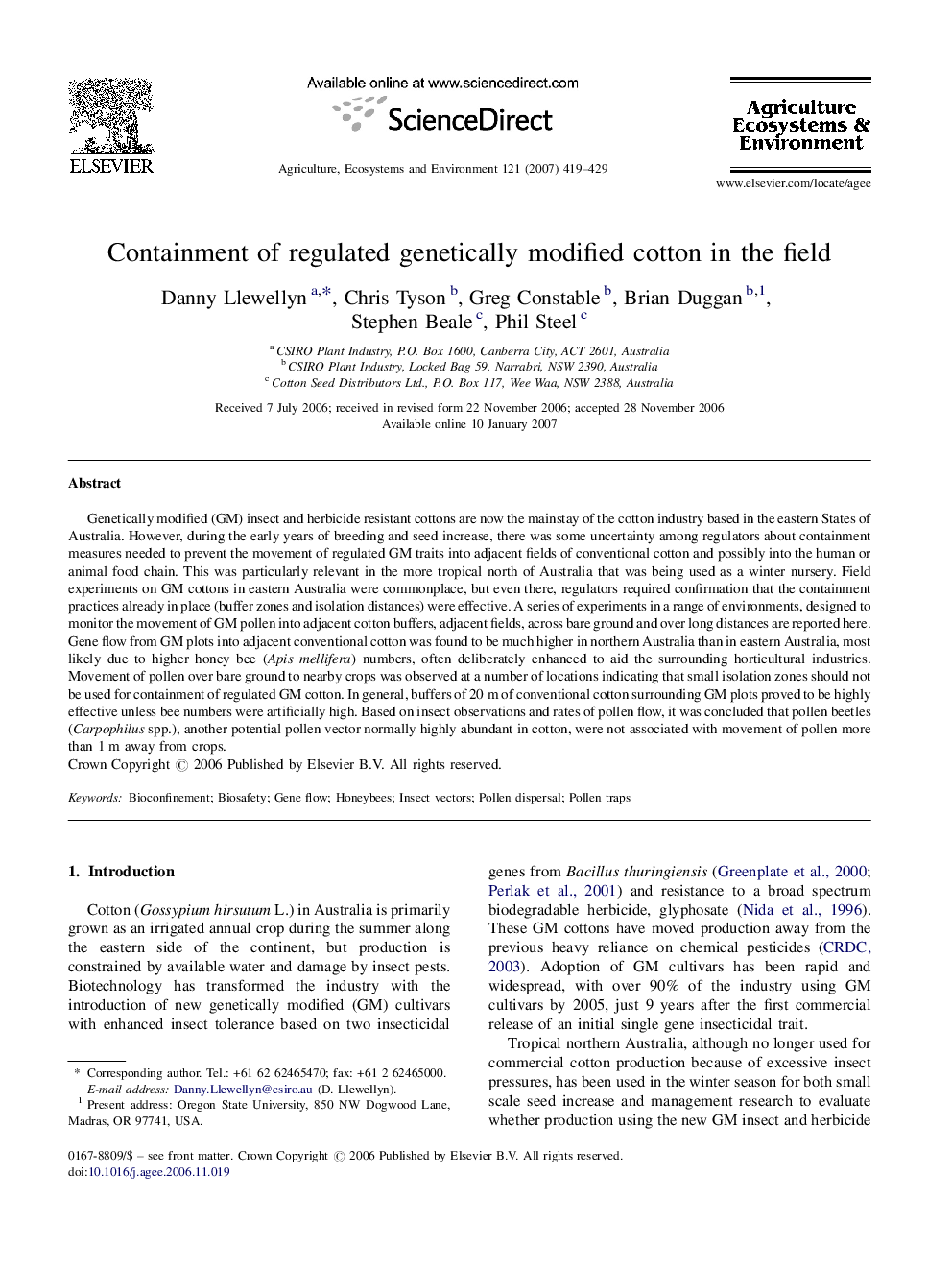| Article ID | Journal | Published Year | Pages | File Type |
|---|---|---|---|---|
| 2415680 | Agriculture, Ecosystems & Environment | 2007 | 11 Pages |
Genetically modified (GM) insect and herbicide resistant cottons are now the mainstay of the cotton industry based in the eastern States of Australia. However, during the early years of breeding and seed increase, there was some uncertainty among regulators about containment measures needed to prevent the movement of regulated GM traits into adjacent fields of conventional cotton and possibly into the human or animal food chain. This was particularly relevant in the more tropical north of Australia that was being used as a winter nursery. Field experiments on GM cottons in eastern Australia were commonplace, but even there, regulators required confirmation that the containment practices already in place (buffer zones and isolation distances) were effective. A series of experiments in a range of environments, designed to monitor the movement of GM pollen into adjacent cotton buffers, adjacent fields, across bare ground and over long distances are reported here. Gene flow from GM plots into adjacent conventional cotton was found to be much higher in northern Australia than in eastern Australia, most likely due to higher honey bee (Apis mellifera) numbers, often deliberately enhanced to aid the surrounding horticultural industries. Movement of pollen over bare ground to nearby crops was observed at a number of locations indicating that small isolation zones should not be used for containment of regulated GM cotton. In general, buffers of 20 m of conventional cotton surrounding GM plots proved to be highly effective unless bee numbers were artificially high. Based on insect observations and rates of pollen flow, it was concluded that pollen beetles (Carpophilus spp.), another potential pollen vector normally highly abundant in cotton, were not associated with movement of pollen more than 1 m away from crops.
